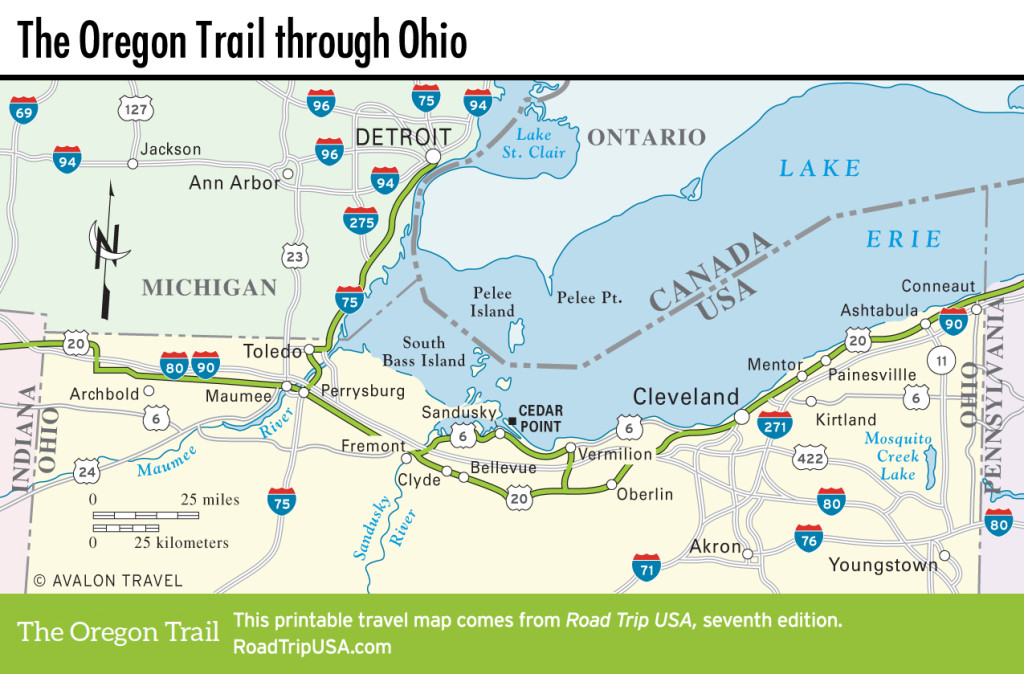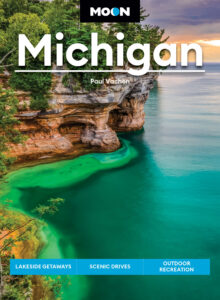Detour: Detroit
Though Detroit (pop. 672,662, down from a 1950 peak population of 1,849,568!) is a ways off our route, no guidebook enamored with American car culture could feel complete without covering the “Motor City,” heart of America’s automotive industry. Once among the biggest, brawniest, and busiest American cities, Detroit has lost nearly two-thirds of its population to suburban sprawl, sub-prime foreclosure, and out-migration, leading the city to declare bankruptcy in 2013, with debts of $20 billion. Numerous efforts to “renew” the city by replacing the historic urban fabric with megalithic casinos, sports stadiums, and (more recently) urban farms and artisanal manufacturing have resulted in a cityscape that at times resembles a war zone, but there are plenty of places where Detroit’s positive energy and creativity holds back the decline.
One of the best ways to get a sense of Detroit, past and present, is at the Detroit Institute of the Arts (5200 Woodward Ave., 313/833-7900, Tues.-Sun., $14), two miles north of downtown on the city’s once-proud main drag. The DIA is home to a massive collection of art from around the world as well as a huge and powerful Diego Rivera mural, Detroit Industry, celebrating the workers behind the wheels. Across the street is the worthwhile Detroit Historical Museum (Tues.-Sun., $10).
Another must-see is the Motown Museum (2648 W. Grand Blvd., 313/875-2264, Tues.-Sat. summer, Tues.-Sat. winter, $15), about three miles northwest of downtown, contained in the very house where Berry Gordy Jr. produced so many great dance hits in the 1960s by the likes of Smokey Robinson, Martha Reeves, Marvin Gaye, Stevie Wonder, the Temptations, and Diana Ross and the Supremes. Detroit also remembers Joe Louis, 1930s-era boxer known as the “Brown Bomber,” with the 25-foot-high Big Fist, looming over the city’s main thoroughfare, in the middle of Woodward Avenue at Jefferson Avenue, across from the Renaissance Center downtown.
Baseball fans will want to take in a Detroit Tigers (313/962-4000) game in the fan-friendly, faux-retro surrounds of downtown’s Comerica Park, where a Ferris wheel and a carousel entertain between pitches.
In the southwestern suburbs of Detroit, pay homage to the man who made your car affordable at The Henry Ford: America’s Greatest History Attraction (20900 Oakwood Blvd., 800/835-5237 or 313/982-6001, daily Apr. 15-Nov., about $40 for both museum and village combo), located just off US-12 in Dearborn, about 10 miles southwest of downtown Detroit. The complex comprises the Henry Ford Museum, Greenfield Village, and a Ford factory, and its incredible collection of cars and car-related objects certainly illustrates the massive impact the automobile has had on American history and American life. The adjacent open-air complex of Greenfield Village is a virtual microcosm of American history, holding everything from Abe Lincoln’s law office and Thomas Edison’s workshop to the Montgomery, Alabama, bus on which longtime Detroit resident Rosa Parks refused to give up her seat in 1955, sparking the Civil Rights-era bus boycott.
Practicalities
The downtown riverfront has been the focus of much of Detroit’s reinvention, but the best places to stay, eat, and generally spend time are in smaller neighborhoods around the city. One welcome sign of Detroit’s potential future has been the success of artisanal food like that sold on Saturday in and around the historic Eastern Market and every day at Slow’s Bar-B-Q (2138 Michigan Ave., 313/962-9828) in the trendy Corktown district west of downtown. To gain a deeper appreciation of Detroit’s past, stay overnight near the Detroit Institute of the Arts and lively Wayne State University at one of the restored Victorian-era homes that make up the Inn on Ferry Street (84 E. Ferry St., 313/871-6000, $179 and up), a comfortable property that feels like a B&B.
Related Travel Guides
Ohio Travel Map

















